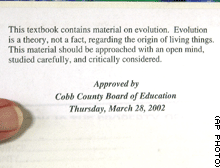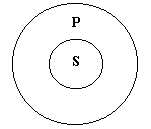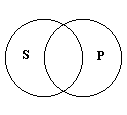WEBLOG
Previous Month | RSS/XML | Current | Next Month
November 30th, 2004 (Permalink)
Book Review: Voodoo Science
Title: Voodoo Science: The Road from Foolishness to Fraud
Author: Robert Park
Publisher: Oxford University Press
Date of Publication: 2000
Quote: "[Senator Tom] Harkin…claims to have been cured of his allergies by swallowing vast numbers of bee pollen capsules. … Bee pollen, it turned out, was under a legal cloud. The man who sold the bee pollen to Harkin was forced to pay a $200,000 settlement under a consent agreement with the Federal Trade Commission, for making false claims in an infomercial. The infomercial claimed, among other things, that 'the risen Jesus Christ, when he came back to Earth, consumed bee pollen.' Testimonials are usually allowed, but the FTC apparently concluded that a testimonial from Jesus Christ was going too far." (p. 65)
Review: What is "voodoo science"? It is science gone wrong, according to physicist Robert Park. What I like best about this book is his classification of voodoo science into four ways that science can go wrong:
- Pathological science: When genuine scientists err, and not only fail to recognize their error, but persist in defending it.
Example: Pons and Fleischmann's cold fusion (pp. 14-27). - Pseudoscience: Superstition and magical thinking dressed up in scientific-sounding jargon or mathematics.
Examples: "The Mars effect", a form of astrology in which the planets are supposed to affect one's profession (pp. 200-201). - Junk Science: Bad science sometimes engaged in by good scientists, aimed at swaying juries and, presumably―though Park doesn't mention this possibility―politicized science intended to sway voters.
Example: A study found a statistical correlation between cases of childhood leukemia and electric power lines; it turned out to be the Texas sharpshooter at work (chapters 7-8). - Fraudulent Science: "Science" in which evidence has been altered, manufactured, or suppressed, with an intent to deceive. Fraudulent science is no more science than a counterfeit dollar is a dollar.
Example: In the late '70s, France spent around $200 million dollars on developing a "sniffer" plane that was supposed to do aerial mapping of mineral deposits, but it turned out to be a scam (pp. 190-191).
Park points out that the boundaries between these categories are fuzzy. He emphasizes that scientists may start out perfectly sincere, falling innocently into pathological science, but end up engaging in fraudulent science to protect their careers or reputations. Moreover, when scientists are convinced that they are correct, they may feel justified in fudging the data a little, or otherwise committing fraud in order to make results come out "right".
Since Park is a physicist, he rightly concentrates on examples that involve physics, such as perpetual motion machines and various engines that are supposed to produce more energy than they use. My favorite of these is the gravity shield, which Park explains would make it possible to build a perpetual motion machine. "How?", you ask. Easy! Just place the shield under one-half of a wheel with a horizontal axis, thus causing the unbalanced wheel to rotate (pp. 135-138).
Also interesting and a little disturbing is the poor reporting on bad science engaged in by the major news media. Even those few reporters who are educated in science do a bad job, according to Park. This appears to be partly because science stories are considered "human interest" stories, and thus don't require careful checking like real stories; given the already low standards of much political reporting revealed in recent scandals, the standards for science stories couldn't get much lower. If only they would hire Robert Park!
Resources:
- Irving Langmuir, "Langmuir's Talk on Pathological Science", 12/18/1953
The term "pathological" science appears to have originated with this talk given by Irving Langmuir in 1953, which Park draws upon for his discussion of its characteristics, as well as for some examples. This is a transcript of the entire talk. (12/2/2004) - Bob Park, "What's New?", American Physical Society
Park writes a weekly physics news column for the APS in which he occasionally reports on voodoo science; for instance, the current column has an update on cold fusion. (12/1/2004)
November 19th, 2004 (Permalink)
What's New?
I've added Julian Baggini's latest Bad Moves column as a Resource to the entry for the gambler's fallacy. Don't miss it.
November 17th, 2004 (Permalink)
Just the Facts, Ma'am

A suburban Atlanta county has adopted a sticker that is placed on public school textbooks which deal with evolution. A lawyer for the county says that the sticker "provides a unique opportunity for critical thinking." Indeed, the sticker itself provides the first such opportunity.
The sticker claims that evolution is not a fact, but a theory. This is the error, frequently made by creationists, of confusing two different meanings of "theory". One is the colloquial meaning, and the other is scientific. In the colloquial sense of "theory", the words "theory" and "fact" are contrary, that is, both cannot be simultaneously true of an idea. So, in this sense, the "theory" of evolution cannot be a fact. However, in the scientific sense of "theory", "theory" and "fact" are not contrary. The scientific "theory" of evolution is both theory and fact.
Sources:
- "Sticker in Textbook Reignites Evolution Debate", Associated Press, 11/8/2004
- "Lawyers: Evolution Sticker Decision Month Away", Associated Press, 11/12/2004
November 9th, 2004 (Permalink)
If it Floats Like a Duck, it Must be a Witch
The Church of Critical Thinking has posted a transcript of a funny, fallacy-filled scene from "Monty Python and the Holy Grail". Check it out.
Source: "Monty Python and the Humorous Fallacy", Church of Critical Thinking, 11/9/2004
November 7th, 2004 (Permalink)
Why Listen to What "They" Say?
Daniel Okrent, "Public Editor" for the New York Times, has an article on the use of unnamed experts in news reports. An unnamed expert is a logical boobytrap because there is no way to check whether the supposed expert is genuine or has a conflict of interest, unless you know who it is. One reporter who referred to unnamed experts admitted to Okrent that there really were no such experts; the reporter was just using this turn of phrase to sneak in his own opinion. If this happens at a newspaper as prestigious as the Times, it probably happens just about everywhere else.
Source: Daniel Okrent, "The Public Editor: Analysts Say Experts Are Hazardous to Your Newspaper", New York Times, 10/31/2004
Via: Patterico, "Many Experts Say Reporters are Often Lazy Dissemblers", Oh, That Liberal Media, 11/7/2004
November 3rd, 2004 (Permalink)
Q&A

Q: "I am by no means an expert on the subject, but is the Venn Diagram on the Existential Fallacy page correct? Since you're using the term 'all' in the Example and Counter-example, shouldn't the diagram look like this:"In the Example, S would be 'trespassers' and P would be 'those prosecuted.' Since the term 'all' is used with trespassers, it seems like the 'trespassers' should be completely encompassed by 'those prosecuted.'"―Brian Kaplan
A: Both diagrams are correct, Brian, they are just different systems for representing relationships between classes. The kind of diagram that you give is often called a "Venn" diagram, but is more accurately an Euler diagram―named for logician Leonhard Euler, who preceded John Venn by over a century. Euler's diagrams represent A-type propositions, such as the one in the Existential Fallacy Example, by placing the class referred to by the subject term wholly inside that referred to by the predicate term. Similarly, the Euler diagram for E-type propositions, such as "no democrats are republicans", is the following:

In contrast, the diagrams invented by John Venn also use circles to represent classes, but do not represent the relationships between two classes through the spatial relationships between the circles. Instead, there is one Venn diagram for all relationships between two classes, namely:

The logical relationships of containment or exclusion between classes is, then, represented on this diagram by using shading to indicate that certain subclasses are empty. The examples from the Glossary linked to above show how this works for A and E-type propositions. Thanks for the question, Brian!
Source: Sun-Joo Shin & Oliver Lemon, "Diagrams", Stanford Encyclopedia of Philosophy